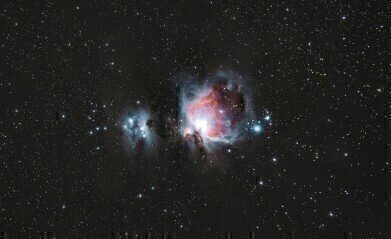News
Debunking Interstellar. Can Space Warp Time? Are Wormholes Real? And Much More!
Jan 01 2014
Christopher Nolan’s Interstellar was without a doubt one of 2014’s most outstanding blockbusters. Yet while the plotline was utterly captivating it left many viewers scratching their heads as to whether or not the scientific plausibility held up. And this was despite the fact that Nolan enlisted the help of illustrious US astrophysicist Professor Kip Thorne to help him maintain as much accuracy as possible. Thorne explains, “Some of the science is known to be true, some is an educated guess, and some is speculation.”
To shed light on the debate we’ve analysed some of the most memorable concepts and put them head to head with cold hard science and a little help from Thorne’s illuminating new book, The Science of Interstellar.
Can time be warped in space? TRUE!
One of the most intriguing concepts explored in Interstellar is the idea that humans age at different speeds depending on their intergalactic location. Is this possible? According to science, the answer is yes! Back in 1912 Einstein suggested that the force of gravity is produced by enormous bodies (such as Earth) bending space time. While the effect on Earth accounts for just a few microseconds a day it still means that humans age a fraction faster in a top floor apartment than in a basement. Technically speaking a planet with a significantly larger mass could have a more noticeable impact on time and aging.
Is it possible to slingshot around a Neutron star? FALSE!
Reaching Miller’s planet was a bit of an ordeal for the Endurance spaceship team due to the fact that it was controlled by the colossal black hole, Gargantua. In the film the crew sidestepped this issue by slingshotting Endurance around Gargantua and travelling at an ultra-fast speed to evade the gravitational and centrifugal forces. While this feat has been pulled off on a smaller scale science dictates that in order to elude Gargantua’s pull Endurance would have to be travelling at the speed of light and rapidly slow down in order to safely land on the planet. Yes, the crew used the Neutron star’s slow spin to reduce speed, but in reality only an Earth sized black hole could have provided enough anti-force. While it did lend dramatic value to the film, this abrupt change in momentum would pull the spaceship to pieces!
Could a black hole such as Gargantua exist? TRUE!
Gargantua was a beautifully sinister concept encircled by a spinning mass of distorted stars and galaxies. This ‘gravitational lensing’ reflects the asymmetrical nature of black holes which bulge out on one side and are slightly concave on the other. Thus, when watching Interstellar you actually see an extremely accurate computer generated representation of what a black hole would look like to the human eye.
Back in 2011, Scientists discovered a blackhole more than five time the size of the sun. The finding was made by researchers at the Instituto de Astrofisica de Canarias (IAC), who had been tracking the object since 1999, when it began to erupt. You can read more about his story in:
Are wormholes real? TRUE AND FALSE!
Interstellar saw the crew bypass the huge distances between galaxies by hitching rides through a wormhole. Put simply, wormholes bend space and time to force two points closer together. While they could theoretically exist, scientists have no idea how holes could be held open long enough to allow a spaceship to enter and depart safely. Hence, we’re answering this one with a yes and a no!
In a recent article, we looked at the possibility of Santa using wormholes for cosmic shortcuts and genetically altered reindeers with helium filled lungs. You can read more about this topic in: How Fast Does Santa Travel?
Digital Edition
Lab Asia Dec 2025
December 2025
Chromatography Articles- Cutting-edge sample preparation tools help laboratories to stay ahead of the curveMass Spectrometry & Spectroscopy Articles- Unlocking the complexity of metabolomics: Pushi...
View all digital editions
Events
Jan 21 2026 Tokyo, Japan
Jan 28 2026 Tokyo, Japan
Jan 29 2026 New Delhi, India
Feb 07 2026 Boston, MA, USA
Asia Pharma Expo/Asia Lab Expo
Feb 12 2026 Dhaka, Bangladesh



















